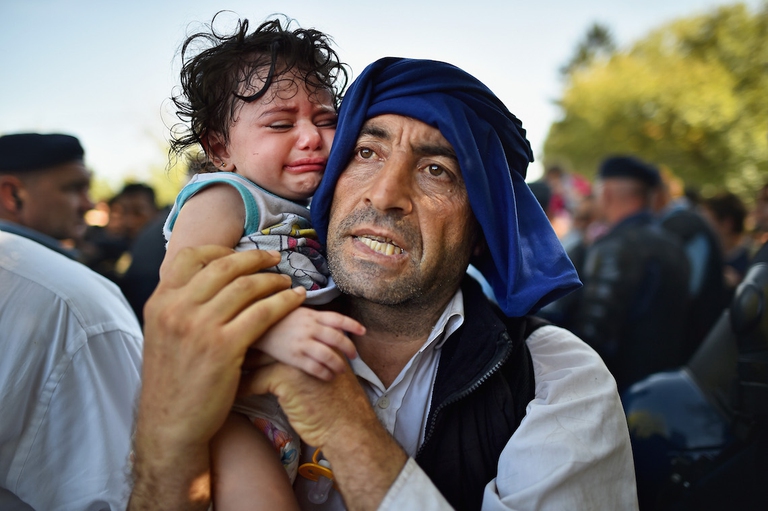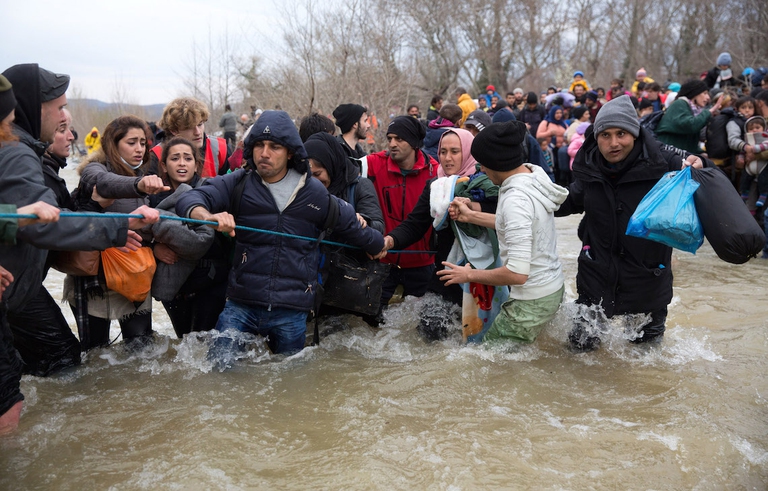
The Louise Michel is the humanitarian rescue ship saving lives in the Mediterranean. Financed by the artist Banksy, it has found a safe port in Sicily.
A new report published by the European Commission reveals that the ongoing refugee crisis has exacerbated the phenomenon of human trafficking across EU Member States. The problem of human trafficking in the European Union Human trafficking is widespread in Europe, and it isn’t a new phenomenon. Taking advantage of loopholes in relevant legislation, organised crime
A new report published by the European Commission reveals that the ongoing refugee crisis has exacerbated the phenomenon of human trafficking across EU Member States.
Human trafficking is widespread in Europe, and it isn’t a new phenomenon. Taking advantage of loopholes in relevant legislation, organised crime groups traffic vulnerable people for sexual and labour exploitation, criminal activities, organ removal, forced marriage, adoption and drug smuggling.
Data submitted by Member States shows that trafficking in human beings for the purpose of sexual exploitation is by far the most prevalent in the EU (67 per cent of victims), followed by forced labor (21 per cent).
In the case of labour exploitation, data reveals that as a consequence of the economic crisis the demand for cheap labour has increased. In addition, a general lack of awareness on contractual obligations and working conditions has given way to increased episodes of exploitation and slavery.
One of the most vulnerable groups targeted by traffickers are children, who are easier to recruit and quicker to replace. “Although child trafficking is prevalent in situations unrelated to migration, such as within a Member State or intra-EU, the information received suggests that the phenomenon has been exacerbated by the ongoing migration and refugee crisis, with specific risks involved for unaccompanied children,” says the report. Out of 96,000 unaccompanied children who claimed asylum in Europe in 2015, at least 10,000 have ‘dropped off the radar’ reports The Guardian.
For this reason the European Commission stresses how important it is that relevant actors, including border officers, lawyers, asylum officers, mediators and doctors are properly trained.
In the current migration crisis, criminal groups are constantly adapting their routes and methodologies, taking advantage of people’s vulnerability, both in transit and destination countries, and adopting new technologies to continue their activities whilst evading controls.
In order to address this worrying situation the European Commission has announced that it will conduct further investigations to assess the scope of the problem, and has called for increased concerted action. It has allocated new funding for actions addressing the integration and safe and sustainable return of traffic victims, with a specific focus on the early identification and protection of children, including unaccompanied children, as well as victims of human trafficking generally.
Siamo anche su WhatsApp. Segui il canale ufficiale LifeGate per restare aggiornata, aggiornato sulle ultime notizie e sulle nostre attività.
![]()
Quest'opera è distribuita con Licenza Creative Commons Attribuzione - Non commerciale - Non opere derivate 4.0 Internazionale.
The Louise Michel is the humanitarian rescue ship saving lives in the Mediterranean. Financed by the artist Banksy, it has found a safe port in Sicily.
Venezuelan refugees are vulnerable to the worsening outbreak in South America: while coronavirus doesn’t discriminate, it does affect some people more than others.
In the midst of India’s coronavirus lockdown, two dozen people lost their lives in a desperate bid to return home: migrant labourers forced to leave the cities where they worked once starvation began knocking at their doors.
Behrouz Boochani returned to being a free man during the course of this interview. The Kurdish writer was imprisoned by the Australian government in Papua New Guinea for six years.
The Global Compact for Safe, Orderly and Regular Migration was signed by 164 nations in Marrakech. This is what the non-binding agreement that encourages international cooperation stipulates.
The winners of the World Press Photo 2019 tell the stories of migrants in the Americas. From the iconic image of a girl crying on the border between Mexico and the United States to the thousands of people walking from Honduras towards a better life.
The Semìno project is a journey of discovery through different countries’ food habits, offering migrants employment opportunities and allowing us to enjoy the properties of vegetables from all over the world.
Travelling across the new route used by migrants to cross the Balkans and reach Trieste in Italy, a reportage that documents the social, economic and political changes of the countries along the way.
The countries hosting the most refugees aren’t the wealthy, Western ones. An overview by NGO Action Against Hunger reminds us that refugees and internally displaced people are far from being safe.









